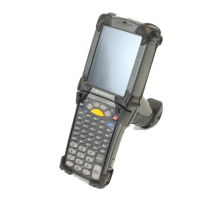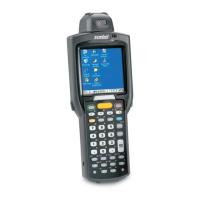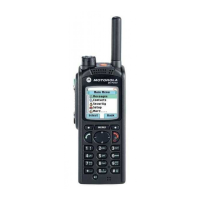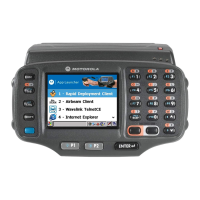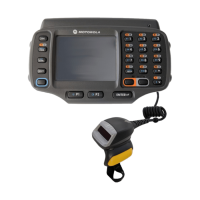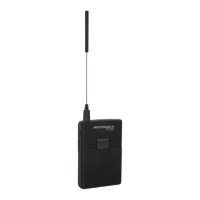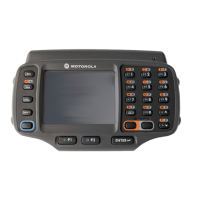Do you have a question about the Motorola MOSCAD-M and is the answer not in the manual?
This manual provides instructions for the installation and operation of the MOSCAD-M Remote Terminal Unit (RTU).
The RTU is a remotely located unit for monitoring and control, operating in stand-alone or distributed systems.
Provides safety warnings for qualified technicians and notes on cable length, radio approvals, and outdoor antenna placement.
Details the 9-30V DC input and recommends a 3.5 amp fuse for the main power supply cable.
Covers wall mounting and DIN rail mounting, including space requirements for the unit.
Introduces the MOSCAD-M RTU, its components, ports, interfaces, and I/Os, with a diagram.
Details the three available ports, external and internal connectors, and their functions.
Explains the 5x4 LED matrix for diagnostics and testing, detailing functions for various pages.
Covers Wetting Switch, Magnetic Relay DO, Open Collector DO, Digital Inputs (DI), Analog Inputs (AI), and Analog Outputs (AO).
Introduces the Power Management feature and its four modes: Disabled, Run, Idle Sleep, and Low Power Sleep.
Details Idle Sleep and Low Power Sleep modes, power consumption, disabled power supplies, and wakeup event handling.
Describes the Ethernet interface option for LAN communication, supporting TCP/IP, with LED indicators.
Provides connection instructions for the external Ethernet Interface unit to the MOSCAD-M RTU and the LAN.
Provides supplementary data on cables and adapters for RTU-to-Computer connections, including cable kit details.
Details R&TTE approved modems and asynchronous connection setups for RTU-to-Modem and RTU-to-RTU links.
Describes MOSCAD-M RTU models, radio options, and analog input configuration options.
Shows how to connect MOSCAD-M units with specific radios and lists installation kit components.
Explains how the debug kit enables 'C' application debugging using the XRAY debugger.
Describes how to change AI measurement units from current to voltage by adjusting jumpers.
Provides instructions on removing connectors, opening the case, and reassembling the RTU.
This manual provides instructions for the installation and operation of the MOSCAD-M Remote Terminal Unit (RTU).
The RTU is a remotely located unit for monitoring and control, operating in stand-alone or distributed systems.
Provides safety warnings for qualified technicians and notes on cable length, radio approvals, and outdoor antenna placement.
Details the 9-30V DC input and recommends a 3.5 amp fuse for the main power supply cable.
Covers wall mounting and DIN rail mounting, including space requirements for the unit.
Introduces the MOSCAD-M RTU, its components, ports, interfaces, and I/Os, with a diagram.
Details the three available ports, external and internal connectors, and their functions.
Explains the 5x4 LED matrix for diagnostics and testing, detailing functions for various pages.
Covers Wetting Switch, Magnetic Relay DO, Open Collector DO, Digital Inputs (DI), Analog Inputs (AI), and Analog Outputs (AO).
Introduces the Power Management feature and its four modes: Disabled, Run, Idle Sleep, and Low Power Sleep.
Details Idle Sleep and Low Power Sleep modes, power consumption, disabled power supplies, and wakeup event handling.
Describes the Ethernet interface option for LAN communication, supporting TCP/IP, with LED indicators.
Provides connection instructions for the external Ethernet Interface unit to the MOSCAD-M RTU and the LAN.
Provides supplementary data on cables and adapters for RTU-to-Computer connections, including cable kit details.
Details R&TTE approved modems and asynchronous connection setups for RTU-to-Modem and RTU-to-RTU links.
Describes MOSCAD-M RTU models, radio options, and analog input configuration options.
Shows how to connect MOSCAD-M units with specific radios and lists installation kit components.
Explains how the debug kit enables 'C' application debugging using the XRAY debugger.
Describes how to change AI measurement units from current to voltage by adjusting jumpers.
Provides instructions on removing connectors, opening the case, and reassembling the RTU.
| Brand | Motorola |
|---|---|
| Model | MOSCAD-M |
| Category | Touch terminals |
| Language | English |


